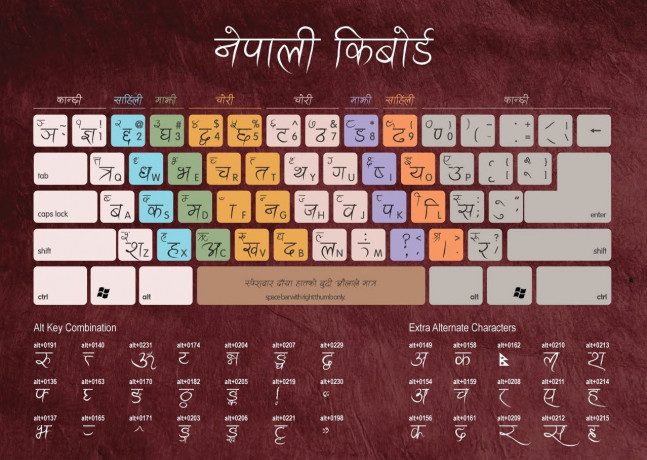The Evolution of the Nepali Keyboard: Bridging Technology and Tradition in Nepal Professional
Dec 7th, 2023 at 08:36 Blogs Kathmandu 829 views Reference: 1243Location: Kathmandu
Price: Contact us
The Evolution of the Nepali Keyboard: Bridging Technology and Tradition in Nepal
Introduction
In the diverse landscape of Nepal, where cultural traditions seamlessly blend with modern advancements, the evolution of the Nepali keyboard stands as a testament to the harmonious coexistence of heritage and technology. The journey of the Nepali keyboard reflects not only the linguistic diversity of the nation but also the adaptability of technology to local needs.
Early Days of Nepali Typing
Before the digital era, typists in Nepal faced the challenge of transcribing the rich and varied Nepali script using standard typewriters designed for English. This posed a considerable barrier for communication in Nepali, the official language of the country. As technology progressed, the need for a dedicated Nepali keyboard became apparent.
The Birth of the Nepali Keyboard
The emergence of computers and digital technology marked a turning point in addressing the linguistic gap. Engineers and linguists collaborated to design the first Nepali keyboard, tailor-made for the unique characters and symbols of the Nepali script. This innovation not only facilitated efficient communication but also contributed to the preservation of the Nepali language in the digital age.
Key Features of the Nepali Keyboard
The Nepali keyboard features a layout that accommodates the complex characters of the Devanagari script, the writing system used for Nepali. Unlike the English keyboard, which has 26 letters, the Devanagari script encompasses 36 consonants and 12 vowels. The layout is organized in a manner that allows easy access to these characters, promoting a seamless typing experience for users.
Moreover, the keyboard often includes a dedicated key for "Halant" – a diacritic used in the Devanagari script to modify the pronunciation of consonants. This feature enhances the accuracy of typing and ensures that the nuances of the Nepali language are preserved in digital communication.
Adaptations for Mobile Devices
With the widespread use of smartphones, the Nepali keyboard has adapted to the constraints of smaller screens. Mobile versions of the keyboard often feature intuitive autocorrect and predictive text functions to enhance the user experience. This has made typing in Nepali more accessible to a broader audience, including those who may not be fluent in English.
Localization and Cultural Sensitivity
Beyond technical considerations, the development of the Nepali keyboard also reflects a commitment to cultural sensitivity. Designers have incorporated symbols and characters representing Nepal's cultural heritage, such as the national flag and iconic landmarks. This not only adds a touch of identity to the keyboard but also reinforces the cultural pride of its users.
Challenges and Future Developments
Despite the strides made in the development of the Nepali keyboard, challenges persist. The growing influence of English in digital communication and the rise of international standards pose potential threats to the continued use and development of the Nepali keyboard. However, the resilience of the Nepali language and the dedication of developers suggest that these challenges can be overcome through ongoing innovation and adaptation.
Conclusion
The evolution of the Nepali keyboard stands as a remarkable example of how technology can be harnessed to bridge linguistic and cultural gaps. From the early days of struggling with English typewriters to the sophisticated and culturally sensitive keyboards of today, the journey reflects Nepal's commitment to preserving its linguistic heritage in the digital age. As technology continues to advance, the Nepali keyboard will likely undergo further refinements, ensuring its relevance and usability for generations to come.


